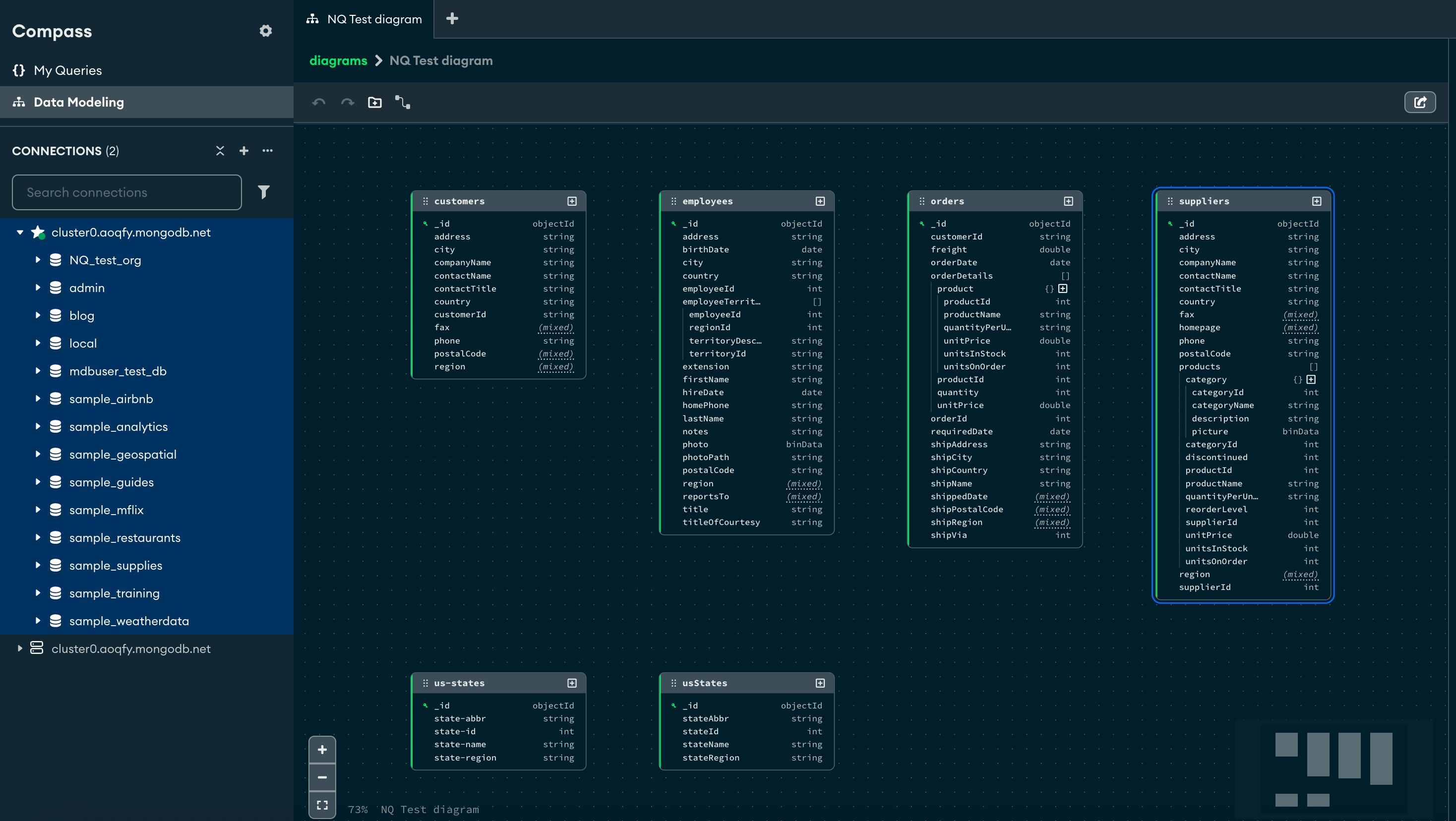MongoDB is excited to announce the release of the new data modeling experience in MongoDB Compass, the GUI for MongoDB. The new experience offers a unified workspace for developers to visualize, refactor, and collaborate with other teams to build optimal data models for their applications.
The document model was designed for flexibility
When an application needs to evolve, developers working with a relational database must contend with its rigid, predefined schema (the structure of a set of documents). Accommodating new kinds of data means altering that schema, a process that often requires writing complex migration scripts for even simple changes. These migrations introduce the risk of application downtime and create friction that slows the pace of innovation, forcing developers to work around the database, not with it.
MongoDB’s flexible data model strategically balances adaptability and precision, letting you build the right data model for your use case. It allows developers to easily incorporate and integrate any type of data—from text and event streams to vectors—into a single database, without bringing the entire application offline. The new data modeling experience allows you to model how your application reads and writes data.
This flexibility, however, is often mistaken for having no schema at all. The reality is that instead of being schema-less, MongoDB has a flexible schema. This means you can—and should—define a data model, but you also have the power to easily evolve it as your application's needs change. For added control and optimization, you can enforce your schema using our built-in schema validation feature.
Why we built this new data modeling experience
Working with a complex data model can sometimes leave developers feeling like they are flying blind. From our conversations with the community, we identified a few common struggles that can make evolving data models particularly painful.
First, it can be challenging to understand your existing data model. Without a clear, visual map of your data model, how can you optimize how your data is stored and accessed? You can't fix what you can't see, and spotting inconsistencies or opportunities for improvement can be a guessing game.
Then there is team collaboration. We learned of debates over data model changes going nowhere, all because there was no single source of truth for what the data model actually looked like. One developer's mental model of the data can be different from another's. One person tries to explain a critical data model change on a whiteboard, another references an outdated diagram, and suddenly, what should have been a simple decision turns into a week of meetings. This friction slows down the entire development process. Getting everyone on the same page is inefficient and, frankly, exhausting.
To top it all off, sometimes developers had to jump out of their workflow and into third-party tools just to get a basic visualization, creating a disjointed and clunky experience.
These challenges are the reason this new feature exists. We wanted to build something that gives you instant clarity and a single source of truth for your team right inside MongoDB Compass, where you interact with your MongoDB database.
What can developers do with this new experience?
The new data modeling experience in MongoDB Compass helps you take full advantage of the document model by enabling you to:
- Visualize existing data models with clear entity-relationship diagrams (ERDs) that simplify complex data models. Visualizing your data model can help you identify potential impacts of schema changes across related collections.
- Clarify how collections in your data model relate to one another by adding notes that provide context for other teams.
- Refactor data models with an interactive graphical interface. Track and plan changes to your data structure as your application grows. During the development process, you can spot inconsistencies, missing relationships, or optimization opportunities in your data model.
- Collaborate with engineers, product managers, and other stakeholders to provide feedback and finalize designs. You can share these designs as images, JSON files, or .mdm files that can be opened directly in Compass.
- Onboard new team members quickly, as they can now visualize existing data models to understand them better.
In essence, developers can now visualize and craft their data model in a single, frictionless experience, allowing them to adapt their data model confidently as their applications’ needs evolve.
See it in action—and access the experience
In the demo below, see how easy it is to visualize a current MongoDB data model, make changes to your schema (i.e., add new data fields to collections), and export the newly designed data model as a JPEG or JSON file and share it with other teams.

Check it out for yourself—the data modeling experience is available in the latest version of Compass. You can learn more about data modeling best practices in the MongoDB manual. Have fun modeling your data!